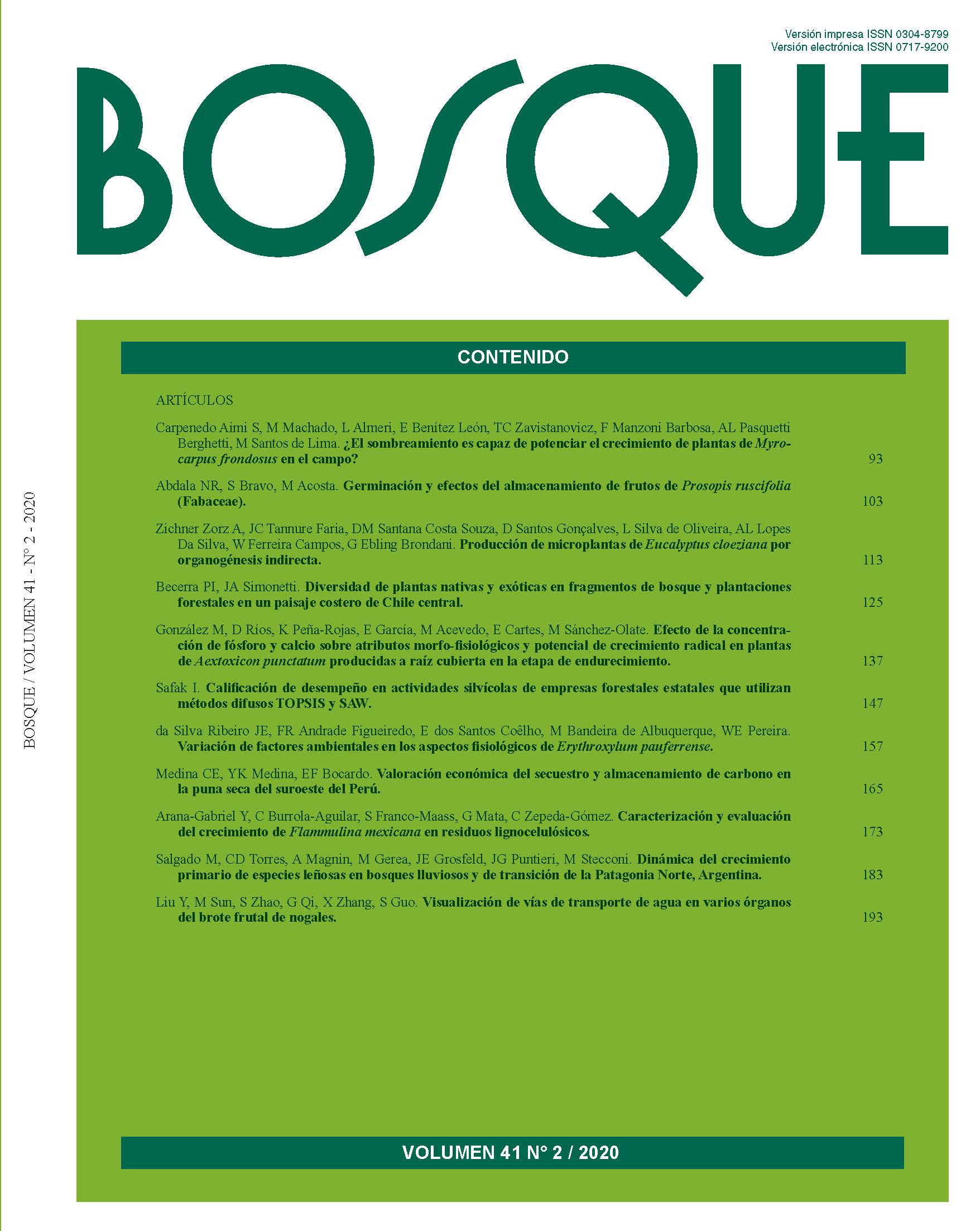Dinámica del crecimiento primario de especies leñosas en bosques lluviosos y de transición de la Patagonia Norte, Argentina
Contenido principal del artículo
Resumen
Los bosques lluviosos (RF) y los bosques de transición (TF) de Patagonia Norte argentina, se desarrollan bajo condiciones climáticas contrastantes, por lo que puede esperarse que las especies leñosas que caracterizan estos dos tipos de bosque difieran en aspectos clave del crecimiento estacional. Este estudio tuvo como objetivo evaluar la dinámica de crecimiento primario de especies arbóreas típicas de RF y de TF, mediante dos ensayos en jardín común en Bariloche, Argentina. Para cada especie se registraron las fechas del inicio y fin, y duración del alargamiento. Se calcularon las tasas de alargamiento relativas (RER) y absolutas (AER), relacionando las últimas con la temperatura. En general, las especies de RF tuvieron momentos de inicio del alargamiento, fin de alargamiento y RER menos variables y períodos de alargamiento más largos que las de TF. Entre las especies de RF, Caldcluvia paniculata tuvo el período de alargamiento más largo y Luma apiculata el más corto (26,9 y 18,9 semanas, respectivamente). Entre las especies de TF, Diostea juncea tuvo el período de alargamiento más largo y Maytenus boaria el más corto (18,2 y 13,0 semanas, respectivamente). Las AER de las especies de RF estuvieron más relacionadas con la temperatura que las de TF. Este estudio aporta evidencia que sugiere que la dinámica de crecimiento en especies del TF está sujeta a mayor control endógeno que en especies de RF; las especies del TF estarían mejor adaptadas a condiciones climáticas más estrictas durante el período de crecimiento primario.

